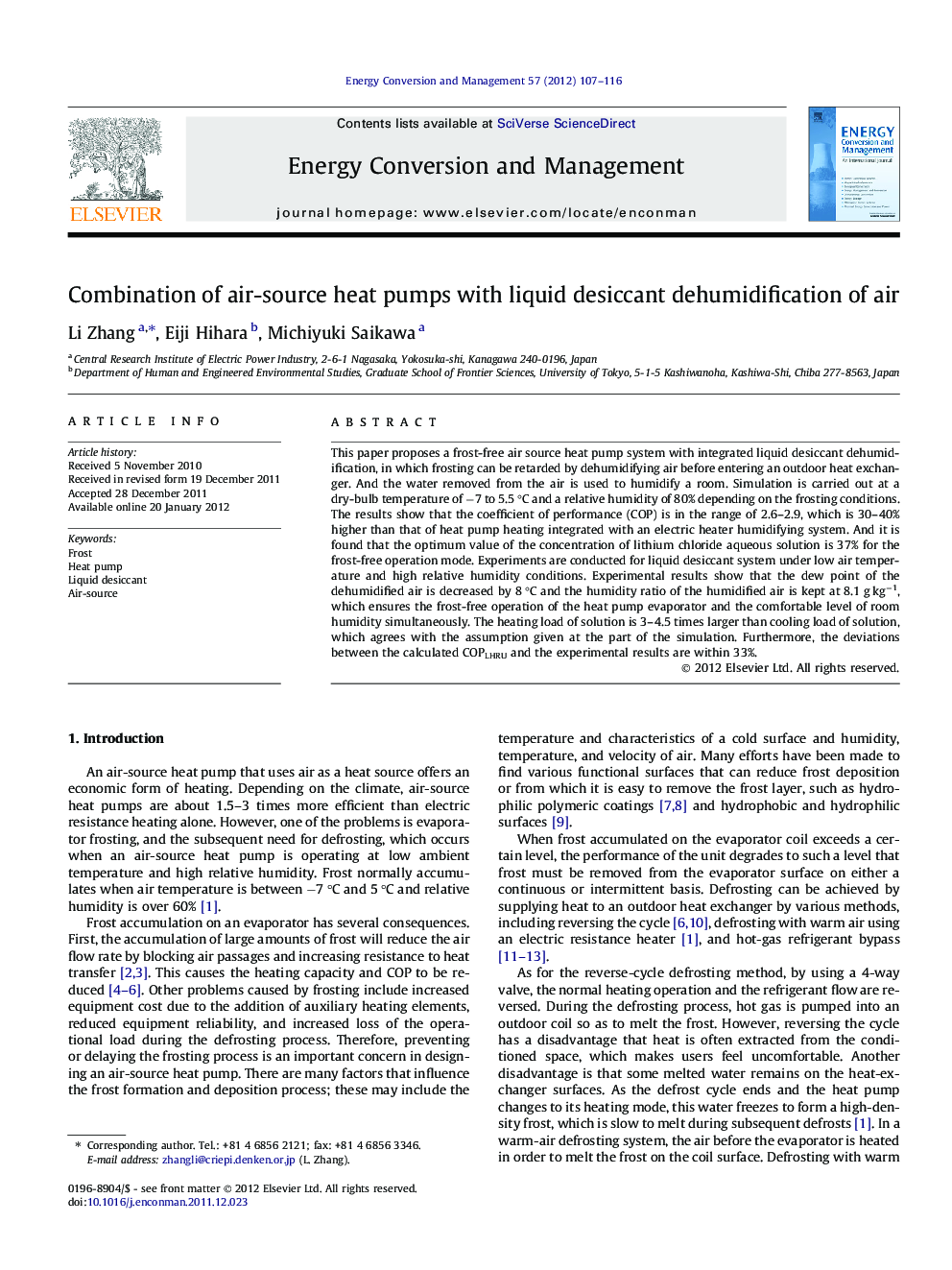| کد مقاله | کد نشریه | سال انتشار | مقاله انگلیسی | نسخه تمام متن |
|---|---|---|---|---|
| 761216 | 1462905 | 2012 | 10 صفحه PDF | دانلود رایگان |

This paper proposes a frost-free air source heat pump system with integrated liquid desiccant dehumidification, in which frosting can be retarded by dehumidifying air before entering an outdoor heat exchanger. And the water removed from the air is used to humidify a room. Simulation is carried out at a dry-bulb temperature of −7 to 5.5 °C and a relative humidity of 80% depending on the frosting conditions. The results show that the coefficient of performance (COP) is in the range of 2.6–2.9, which is 30–40% higher than that of heat pump heating integrated with an electric heater humidifying system. And it is found that the optimum value of the concentration of lithium chloride aqueous solution is 37% for the frost-free operation mode. Experiments are conducted for liquid desiccant system under low air temperature and high relative humidity conditions. Experimental results show that the dew point of the dehumidified air is decreased by 8 °C and the humidity ratio of the humidified air is kept at 8.1 g kg−1, which ensures the frost-free operation of the heat pump evaporator and the comfortable level of room humidity simultaneously. The heating load of solution is 3–4.5 times larger than cooling load of solution, which agrees with the assumption given at the part of the simulation. Furthermore, the deviations between the calculated COPLHRU and the experimental results are within 33%.
► We propose a frost-free air-source heat pump system with integrated desiccant.
► The system can provide heating load continuously and humidify room.
► The coefficient of performance of the system is 2.6 at Ta = −7 °C and RH = 80%.
► The heating load of solution is 3–4 times larger than cooling load of solution.
Journal: Energy Conversion and Management - Volume 57, May 2012, Pages 107–116